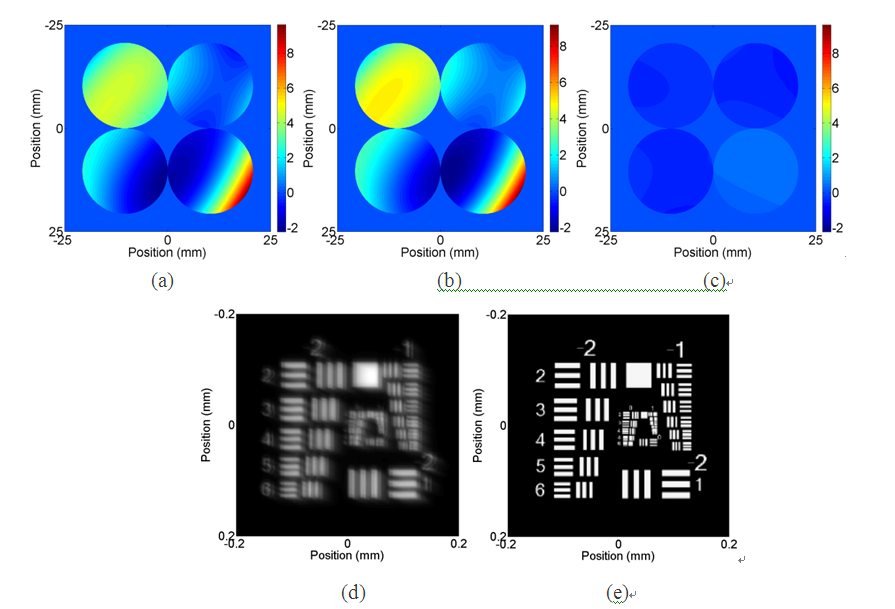Synthetic Aperture Optical Imaging Based on Spatial Modulation Diversity
The research group led by REN Ge from Institute of Optics and Electronics, CAS made new progress in synthetic aperture imaging technology. They proposed and demonstrated a synthetic aperture imaging technique based on spatial modulation phase diversity. The technology is potential in high resolution imaging in segmented and multi-aperture optical imaging systems and other applications.
Optical telescope performance is represented mainly in two aspects: one is collecting energy ability of telescope, namely, light gathering capability of telescope; the other is the ability of distinguishing object details that is resolution of telescope. In principle, the larger is the telescope aperture, the stronger is the light gathering ability and the higher the resolution. However, the production and application of large telescope with monolithic primary mirrors has been greatly restricted by a number of factors, such as: manufacturing process, measurement technologies, assembly technologies, cost, dimension and weight. The optical aperture imaging technology will be one of important technical means capable of overcoming this limitation to improve the imaging capabilities. The synthetic aperture imaging system is potential in achieving resolution equal to large single-aperture system by co-phase interference. The main challenges of synthetic aperture imaging are lies co-phase error among single aperture sub-systems and high-definition restoration of target images.
This team established theoretical model and demonstrated experimentally the multi-aperture imaging technique based on sub-aperture modulation phase diversity method. The discrepant multi-frame images were obtained, through spatially modulating single or multiple sub-apertures from the synthesis imaging system. Combined with applied modulation information and based on stochastic parallel gradient descent (SPGD) algorithm for image processing, high-resolution images of the objects were achieved. Compared with traditional methods, this method allows achieving recovered aberration and high-resolution images at the same time, and the system is simple and compact, robust and reliable.
The research is supported by the National Natural Science Foundation of China, Ministry of Science and Technology and Chinese Academy of Sciences.

Figure 1 Aberration and target images restoration results of four-aperture imaging system
(a) loaded aberration, (b) recovered aberration, (c) restored a residual, (d) blurred image, (e) recovered high-definition images
Contact:REN Ge
E-mail: renge@ioe.ac
Key Laboratory of beam control, Chinese Academy of Sciences (http://english.ioe.cas.cn/)
